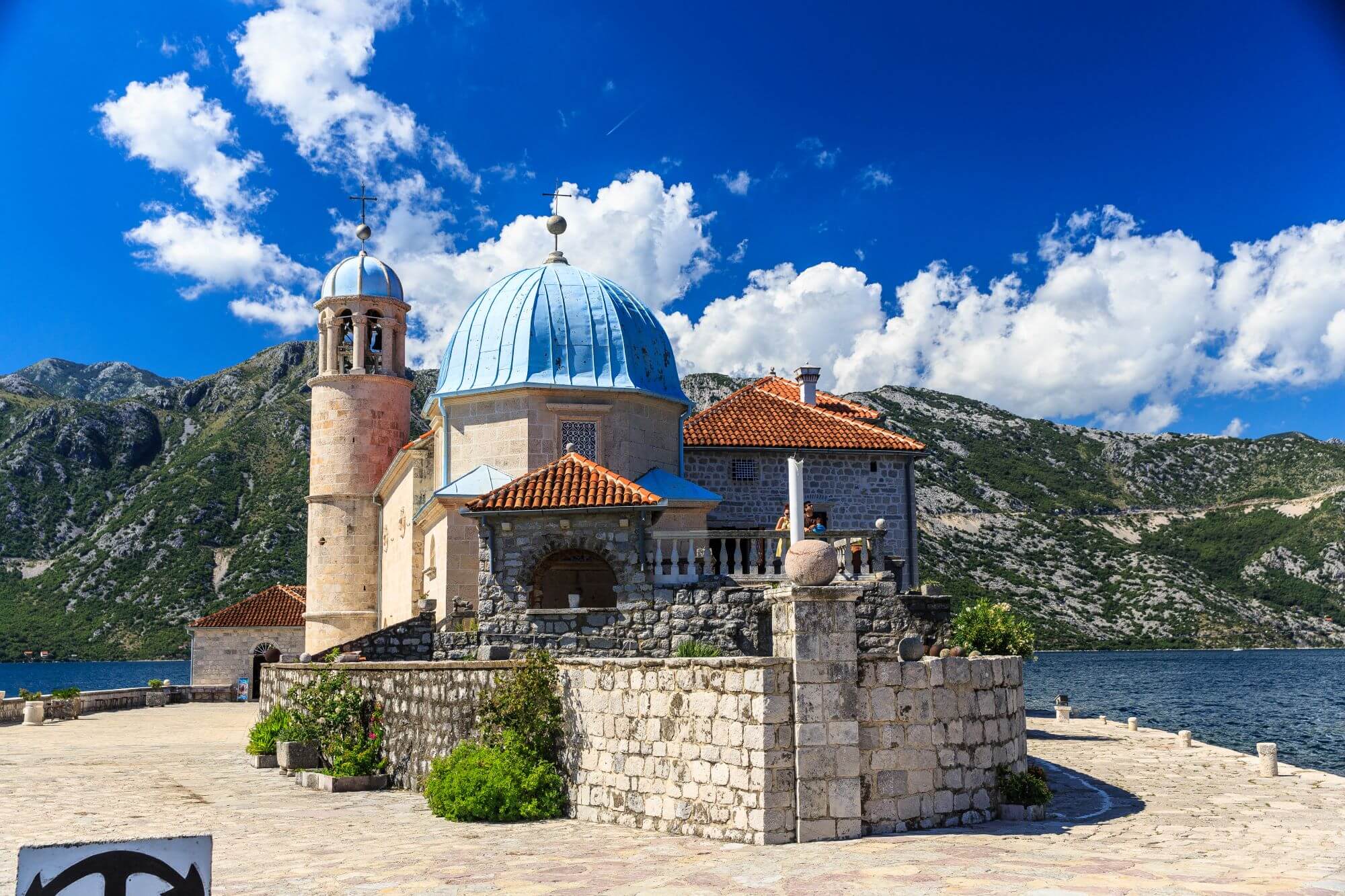Our Lady of the Rocks
This church dedicated to Virgin Mary was built on one of the rare man-made islands of the Mediterranean, with an area of 3030 m2. On July 22, 1452, the Martešić brothers found an image of the Virgin Mary on a rock in front of Perast (Boka Kotorska).
Over the centuries, the inhabitants of Perašta increased the area of the island by piling stones and sinking old sailing ships. Already in the 15th century, a chapel was built on the rock, in which the image of the Virgin Mary was placed. By the beginning of the 17th century, about a hundred ships were sunk, among which there were also captured Turkish ships. The larger church was built in 1630 but was damaged in an earthquake in 1667. In addition to earthquakes, the sanctuary was also exposed to Turkish and pirate attacks.
After the earthquake, the baroque church was rebuilt with the addition of a chapel with an octagonal dome, which houses the main altar from 1722. The sanctuary took its current form in 1725 and was solemnly consecrated in 1736. The round bell tower, unique in its shape on the Adriatic, most likely owes its structure to the defensive stakes. In the earthquake of 1979, the church was damaged again, but it was repaired afterward.
On the central altar is a painting of the Virgin Mary from the 15th century, the work of the famous painter Lovra Dobričević (?-1478) from Kotor. Behind the altar, you can feel the original rock on which the painting was found. The altar was made of white marble in Genoa in 1796.
In the church, there is a rich treasury of votive gifts from sailors, the most famous of which is a silver relief depicting the city of Perast, two islets, and the Turkish army attacking the city.
The folk ceremony of Fašinada – the traditional piling of stones around the island – has remained with the people to this day. The ceremony is held every year on July 22, the day the painting was found. Boats from the bay bring stones to the island and then throw them around the shore. Only men participate in the ceremony, accompanied by folk songs. The custom ends with dinner on the island.




Leave a Reply